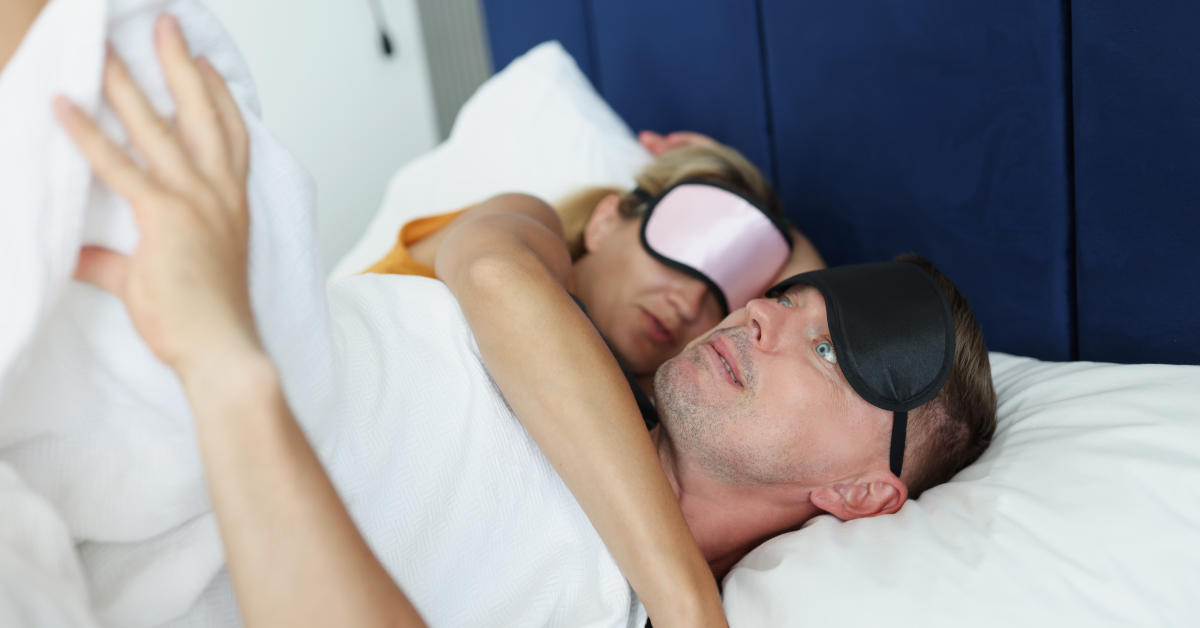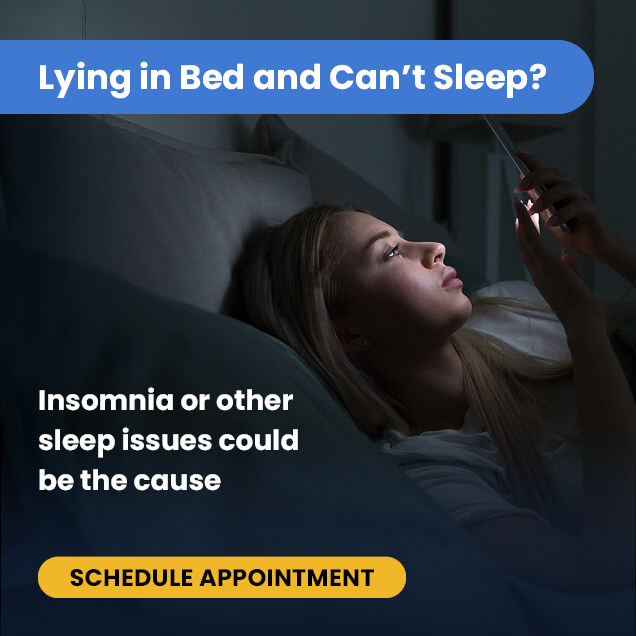What is RBD? | What Causes RBD? | How Common is RBD? | What Are The Symptoms? |
Diagnosis Of RBD | Treatment of RBD
Overview
While it seems implausible, imagine your unconscious body acting out your dream. Typically, during REM Sleep, a stage of sleep characterized by vivid dreams and brain activity, most of the body’s muscles are temporarily paralyzed to prevent you from acting out your dreams and inadvertently injuring yourself.
This safety check enables you to dream without the risk of causing harm to yourself or your bedmate when you sleep; however, this is not the case for anyone with REM-sleep behavioral disorder (RBD).
People who have this sleep disorder stay active during REM sleep, acting out their dream while they remain sleeping. RBD has been linked to neurodegenerative diseases like Parkinson’s disease.[1]
Parkinson’s disease is a progressive neurodegenerative disorder with a preference for the motor system, the nervous system responsible for movement.
It’s characterized by tremors, bradykinesia (slow and forced movements), and muscle rigidity.[2]
Parkinson’s disease usually begins after age 50. Unfortunately, many celebrities and world leaders are known or suspected to have this debilitating condition.
This list includes Muhammad Ali, Adolf Hilter, and Neil Diamond. Some experts believe that Vladimir Putin may be showing signs of early Parkinson’s disease.
Research suggests that people living with RBD have an increased risk of developing Parkinson’s disease.[1]
People living with both conditions usually have a reduced quality of life and require holistic treatment addressing both conditions.
What is RBD?
RBD is marked by uncontrollable bodily movements and vocalizations while a person dreams vividly during REM sleep.[3] It’s classified as parasomnia, which is abnormal sleep behaviors.
During normal REM sleep, the body goes through a short period of muscle paralysis called atonia.[4] At the same time, the brain acts like it is awake. Blood pressure goes up, breathing rate increases and the eyes move quickly in all directions — the reason it is called rapid eye movement sleep.
The transient paralysis of REM sleep enables safe dreaming while the brain remains active. This paralysis affects most skeletal muscles, excluding muscles responsible for breathing, digestion, and eye movement.
Anyone with RBD will typically not experience the muscle paralysis associated with REM sleep, allowing them to physically act out their dreams.
Frighteningly, RBD is frequently accompanied by intense and terrifying dreams.[3] One may dream of being pursued or attacked and subconsciously act out this dream in real life.
What Causes RBD?
Sleep experts are not certain about the exact cause of RBD; however, studies indicate that it’s related to specific neural pathways in the brain.[5]
A disruption of the specific neural pathways responsible the REM-sleep paralysis is thought to be responsible for this disorder. Also, RBD frequently coexists with other neurological disorders, such as Parkinson’s disease and Lewy body dementia.
In most cases, RBD frequently occurs before the onset of one of these neurodegenerative illnesses.
According to a study, 38 percent of males aged 50 or older with RBD acquired Parkinson’s disease, Lewy body dementia, or multiple symptom atrophy after 13 years.[5] A 16-year follow-up research found that the number had risen to about 81 percent.[6]
Additionally, antidepressants, tricyclic antidepressants, and serotonin-specific reuptake inhibitors have also been linked to REM sleep behavior disorder.[7]
How Common is RBD?
RBD is a relatively uncommon sleep disorder. It affects around 0.5 to 1 percent of individuals. Men and adults over the age of 50 are more likely to suffer from RBD.[8]
What Are The Symptoms?
Anyone living with RBD may experience some of these symptoms, including:
- Minor limb movements
- Violent body movements like jumping out of bed, stomping, kicking, or punching
- Shouting or talking while asleep
People living with this condition are typically unaware of these activities during episodes.[8] Many people are only diagnosed with RBD when a bed partner or roommate informs them of their symptoms.
When someone is having an episode, they can typically be readily awakened, usually waking up aware, rational, and remembering the contents of their dreams. The episodes can happen once or several times when sleeping. They could be infrequent, or they can happen every night. RBD symptoms might appear suddenly or gradually, although they usually worsen over time.
Diagnosis Of RBD
Your doctor will only diagnose RBD if you satisfy the four criteria according to the American Academy of Sleep Medicine’s International Classification of Sleep Disorders guidelines. These criteria include:
- Recurring instances of enacting your dreams with vocalizations or arm-and-leg movements that correlate to the dream’s events
- An in-laboratory polysomnogram (laboratory sleep study) or your clinical history that confirms episodes occur during REM sleep
- Episodes of REM sleep without atonia (loss of muscle tone) confirmed by polysomnography
- The episodes cannot be attributed to another sleep or mental health disorder, medication, or substance abuse
If you suspect you may have RBD, consult your sleep doctor. Your sleep doctor would examine you to pinpoint and rule out the causes of the disorder.
Your doctor will also check if you have symptoms of Parkinson’s disease, as it frequently occurs alongside RBD.
If you have a sleep partner, your doctor may inquire if your partner has witnessed you acting out your dreams and the activities observed.
You will also require polysomnography and a sleep study. The sleep study may be recorded to provide evidence of the behavior enacted during sleep.[8]
Afterward, your sleep doctor will evaluate your symptoms and polysomnography results to determine if RBD should be diagnosed.
Treatment of RBD
Management of REM-sleep behavior disorder typically depends on what your doctor considers best for you.
Individualized treatment for RBD may involve a combination of lifestyle modifications, medication, and injury prevention techniques.
1) Drugs
Drug options for the treatment of RBD include:
- Melatonin: It’s the first-line treatment of choice because it’s potent and typically has fewer side effects than other medication options. It is also beneficial for the elderly, those with dementia, and those with sleep apnea.[9]
- Clonazepam: Studies indicate it is an efficacious medication.[10] However, it is associated with significant side effects such as drowsiness and forgetfulness.[11] It can also cause or exacerbate sleep apnea.[12]
2) Lifestyle Modifications
Your sleep doctor will likely recommend some changes you could adopt to improve your symptoms, including:
- Avoiding Triggers: Alcohol and certain drugs trigger RBD. Your doctor will likely recommend you stay away from these triggers.
- Injury Prevention: Establishing a safe sleeping environment is crucial for people with RBD. Sleep-related injuries, such as bruises, fractures, and head trauma, have been reported in 30 to 81 percent of RBD patients.[8] Additionally, the bed partner is at risk of physical harm when sleeping next to someone who unintentionally acts out violent dreams.
Here are some things you could do to prevent accidental injury from RBD:
- Remove sharp objects and other potentially dangerous objects from your bedroom
- Adding padded bed rails to the side of the bed to prevent you from rolling over
- Cushioning the floor around the bed with pads
- Place the mattress on the floor
Generally speaking, it may be safer for your bed partner to sleep in a separate bed or room until your symptoms are effectively treated.
References:
- Postuma RB;Gagnon JF;Vendette M;Charland K;Montplaisir J; “REM Sleep Behaviour Disorder in Parkinson’s Disease Is Associated with Specific Motor Features.” Journal of Neurology, Neurosurgery, and Psychiatry, U.S. National Library of Medicine, https://pubmed.ncbi.nlm.nih.gov/18682443/
- Williams, D. R., & Litvan, I. (2013). Parkinsonian syndromes. Continuum (Minneapolis, Minn.), 19(5 Movement Disorders), 1189–1212. https://doi.org/10.1212/01.CON.0000436152.24038.e0
- Boeve B. F. (2010). REM sleep behavior disorder: Updated review of the core features, the REM sleep behavior disorder-neurodegenerative disease association, evolving concepts, controversies, and future directions. Annals of the New York Academy of Sciences, 1184, 15–54. https://doi.org/10.1111/j.1749-6632.2009.05115.x
- National Institute of Neurological Disorders and Stroke. (2019, August 13). Brain Basics: Understanding Sleep. NINDS. https://www.ninds.nih.gov/Disorders/Patient-caregiver-Education/understanding-sleep
- Schenck, C. H., Bundlie, S. R., & Mahowald, M. W. (1996). Delayed emergence of a parkinsonian disorder in 38% of 29 older men initially diagnosed with idiopathic rapid eye movement sleep behaviour disorder. Neurology, 46(2), 388–393. https://doi.org/10.1212/wnl.46.2.388
- Schenck, C. H., Boeve, B. F., & Mahowald, M. W. (2013). Delayed emergence of a parkinsonian disorder or dementia in 81% of older men initially diagnosed with idiopathic rapid eye movement sleep behavior disorder: a 16-year update on a previously reported series. Sleep medicine, 14(8), 744–748. https://doi.org/10.1016/j.sleep.2012.10.009
- Teman, P. T., Tippmann-Peikert, M., Silber, M. H., Slocumb, N. L., & Auger, R. R. (2009). Idiopathic rapid-eye-movement sleep disorder: associations with antidepressants, psychiatric diagnoses, and other factors, in relation to age of onset. Sleep medicine, 10(1), 60–65. https://doi.org/10.1016/j.sleep.2007.11.019
- American Academy of Sleep Medicine. (2014). The International Classification of Sleep Disorders – Third Edition (ICSD-3). Darien, IL. https://learn.aasm.org/Public/Catalog/Details.aspx
- Boeve, B. F., Silber, M. H., & Ferman, T. J. (2003). Melatonin for treatment of REM sleep behavior disorder in neurologic disorders: results in 14 patients. Sleep medicine, 4(4), 281–284. https://doi.org/10.1016/s1389-9457(03)00072-8
- Aurora, R. N., Zak, R. S., Maganti, R. K., Auerbach, S. H., Casey, K. R., Chowdhuri, S., Karippot, A., Ramar, K., Kristo, D. A., Morgenthaler, T. I., Standards of Practice Committee, & American Academy of Sleep Medicine (2010). Best practice guide for the treatment of REM sleep behavior disorder (RBD). Journal of clinical sleep medicine : JCSM : official publication of the American Academy of Sleep Medicine, 6(1), 85–95. https://www.ncbi.nlm.nih.gov/pmc/articles/PMC2823283/
- Olson, E. J., Boeve, B. F., & Silber, M. H. (2000). Rapid eye movement sleep behaviour disorder: demographic, clinical and laboratory findings in 93 cases. Brain : a journal of neurology, 123 ( Pt 2), 331–339. https://doi.org/10.1093/brain/123.2.331
- Schuld, A., Kraus, T., Haack, M., Hinze-Selch, D., & Pollmächer, T. (1999). Obstructive sleep apnea syndrome induced by clonazepam in a narcoleptic patient with REM-sleep-behavior disorder. Journal of sleep research, 8(4), 321–322. https://doi.org/10.1046/j.1365-2869.1999.00162.x






